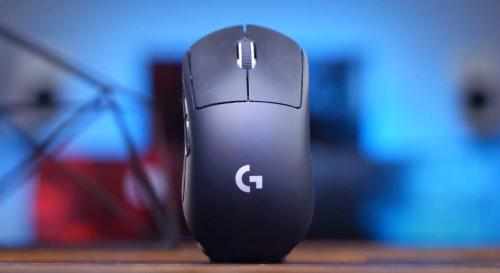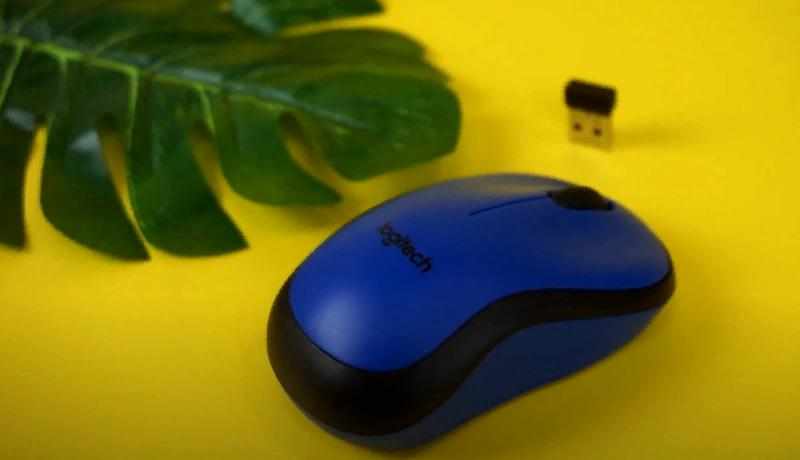Many PC games require an appropriate keyboard and mouse to successfully complete the levels. What is the right mouse for gamers in 2024?
A mouse is a device that ordinary users buy at random, choosing by their appearance. For gamers, this approach will not work; they need a gaming mouse with improved performance, wide functionality and stylish design.
The mouse that fits perfectly in your hand and allows you to stay ahead of your opponents in any game.
In this article, we will analyze the characteristics of a gaming mouse and how to choose it taking into account the latest trends from manufacturers.
Sensor Type – Optical or Laser
Mice are divided into two types according to the type of sensor – optical and laser. The laser mouse can work on almost any surface, be it a cloth mat, glossy or glass surface. The surface can be uneven, there are no strict requirements here. Another advantage of a laser mouse is its low power consumption, which is why a laser sensor is almost always used in wireless mice. Most importantly, the laser sensor has a high resolution, which means faster pointer movement.
The optical sensor is less sensitive on dusty or dirty surfaces. They do not use algorithms for correcting motion or predictions, hardware acceleration is disabled, due to this, a mouse with such a sensor moves more accurately. The maximum resolution of such a mouse is much lower than that of a laser one.
Sensor Resolution
Sensor resolution (DPI / CPI) is one of the main characteristics of a mouse. It means the following – the higher the resolution, the greater the distance the cursor will travel on the screen relative to the distance the mouse will travel on the surface. Modern mice reach 16,000 dpi, but high resolution does not mean high accuracy. Often, 1600 dpi is too much, and shooter players prefer much lower values, such as 800 or 1200 dpi, because this gives higher aiming accuracy. High DPI is used in MOBA games. Therefore, you should not chase the mouse with the maximum resolution, take the one that suits you.
Maximum Acceleration and Response Time
Response time is a parameter showing the time it takes for the signal to come from the mouse to the computer. The shorter the response time, the better, in gaming mice it fluctuates within 1 millisecond. Maximum acceleration – mouse acceleration, at which it stops feeling the rug and scrolls around its axis. Optical mice in this regard hold better, transmitting accurate indicators with sudden movements.
It should be noted here that the speed of the mouse reaction to fast movements on the surface and to the frequency of key clicks is extremely important in many games. Therefore, when choosing a mouse, make sure that it will react “without brakes” to your actions.
By the way, if you want to check how fast you are (and how comfortable and fast your mouse is), then use the service of checking the mouse clicks speed from CPS Counter at https://cpscounter.org. And even better – compete with other gamers: check which of you is faster.
Ergonomics and Design
Most mice are available in symmetrical bodies or in right-handed bodies – made in anatomical shapes of the hand, taking into account the curves and depressions. There are such mice for left-handers, it will not be difficult to find them among gaming solutions. Therefore, it is advisable to choose a mouse for your main hand and its size – too small mice will be inconvenient for players. Pay attention to the material of the mouse – an all-plastic mouse will slide, choose one with rubberized inserts or matte / rough plastic – this way your fingers will not slip even from wet buttons and will feel more pleasant. It is also important to have high-quality Teflon legs so that the mouse glides smoothly, it is desirable that there are spare ones in the kit.
Wired or Wireless?
When choosing a gaming mouse, many people think – buy a wired or wireless model?
Pros of a wired mouse:
- Cheaper than wireless;
- Less delay time;
- Stable connection;
- Lighter than wireless.
Cons of a wired mouse:
- The cable can get in the way on the table, get tangled with other cables, and cause clutter.
Pros of a wireless mouse:
- The absence of a cable gives freedom of movement of the mouse;
- The lack of a cable also improves the aesthetics of the desktop.
Cons of a wireless mouse:
- Longer latency than a wired mouse (but not always, many mid-range and high-end wireless mice use low latency technologies such as Logitech’s LightSpeed;
- More expensive than a wired mouse;
- More weight than a wired mouse due to batteries;
- The need to periodically change batteries and keep them at home in reserve, so as not to be left without a mouse.
From the above, we can conclude that a wired mouse has more advantages than a wireless one. But if the price of a mouse is not a problem for you, there are always spare batteries at home, and your favorite model has low latency, then you should definitely take a closer look at a wireless mouse.
Buttons
When choosing a mouse, proceed from your type of games – shooters do not need many buttons, they can interfere, and strategies and RPGs, on the contrary – additional buttons to which you can bind actions in the game will be very useful. For example, the Razer Naga gaming mouse has 12 side buttons at once. Look at the main keys – the left and right mouse buttons, they should have a good tactile response.
Functions and Profiles
Most gaming mice have the ability to program buttons through the included utility. With the help of the program, you can redefine the purpose of buttons, write on them certain sequences of commands (macros), such as keyboard shortcuts, setting the intervals between clicks and commands for repetition of actions. Also, many mice have a special button for managing DPI profiles – by pressing a button, you can change the sensor resolution based on the preset modes. Sometimes such a button is combined with a mouse scroll. In mice with backlighting, you can often change the color of the LEDs and the light mode.
If the mouse has built-in memory, this will allow you to create profiles and key layouts for different situations / games. You can play with such a mouse not only at home, but also in a gaming club / with friends, you don’t have to re-configure anything. Profiles can be stored both in the mouse and on the computer. Recently, cloud storage from manufacturers has also become popular.
Conclusion
We hope this guide will help you choose the perfect gaming mouse that will serve you for years to come. When choosing a gaming mouse, consider all the characteristics, choose a mouse for yourself and your gaming preferences, read the reviews of the owners of this model. Take a look at such trusted brands as Logitech, Razer, ASUS, HyperX.









